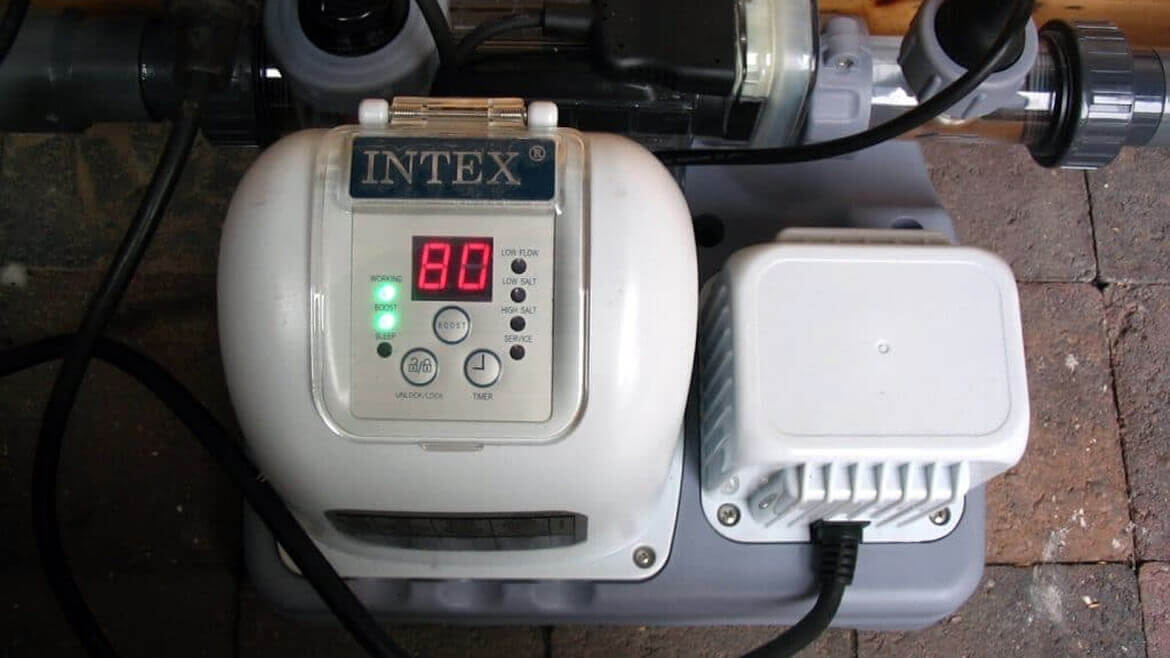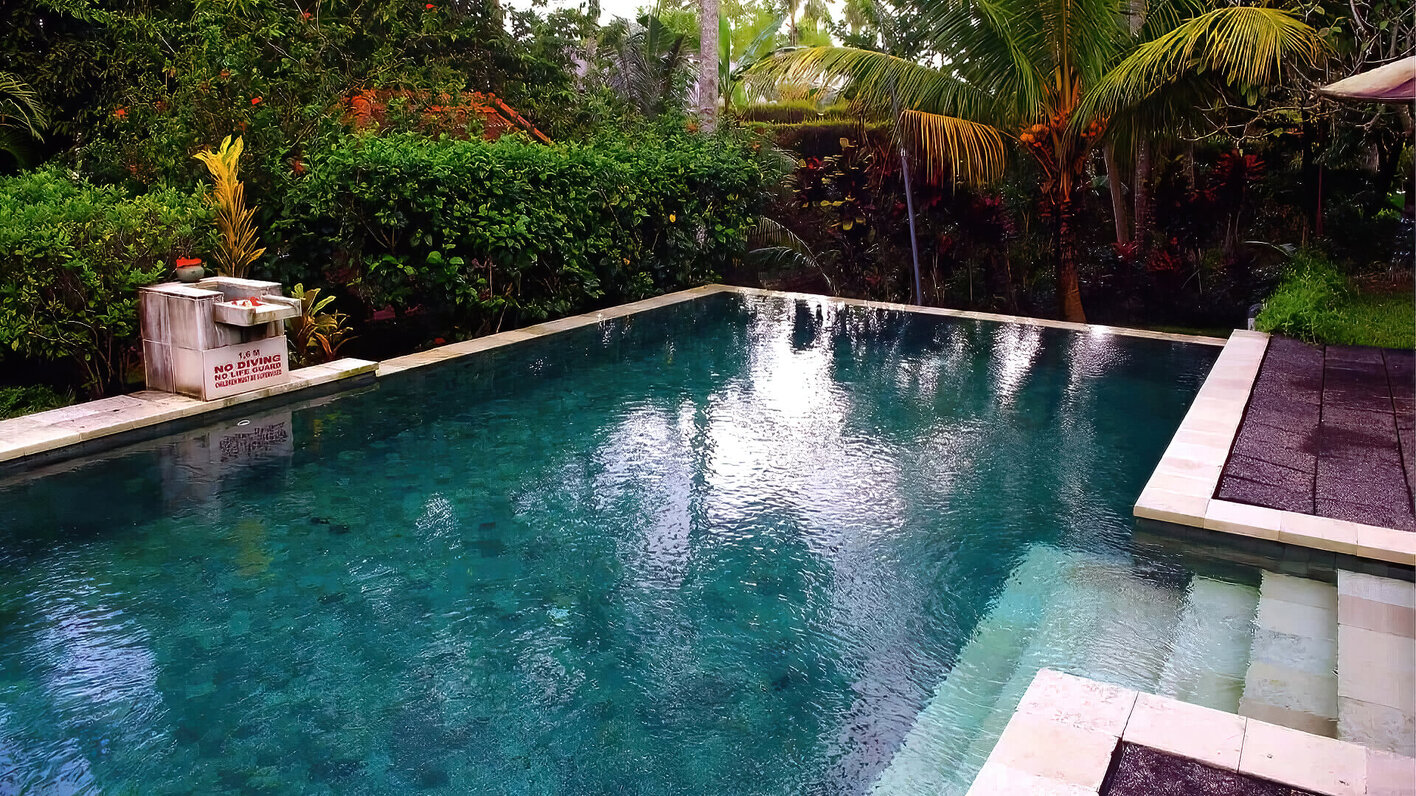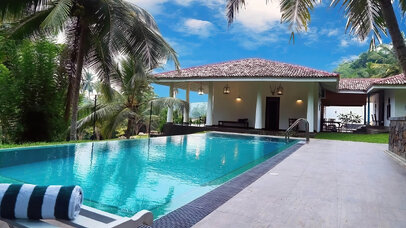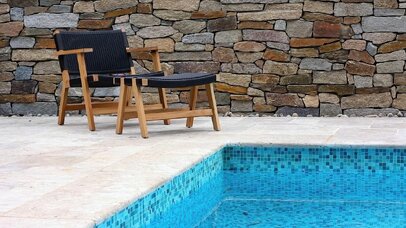When the first saltwater pools appeared in the 1980s, we bet people didn’t think they would become so popular. Today, they are one of the most sought-after landscaping features for modern-day homeowners.
But have you thought about what makes saltwater pools challenging to maintain? These pools pass salt water between two electrically charged metal plates to produce chlorine. Therefore, you can’t take care of them like the traditional units.

Well then, what should you do? It’s important to note that these pools have many advantages, which are in high demand. And we’ll discuss all these essential aspects to help you gain insight into the topic.
Gone are the days of red eyes and the smell of chlorine; from now on, you can enjoy the feel of a salt water pool for maximum comfort. So whether you are looking for a relaxing indoor pool or a fun and playful backyard oasis — saltwater pools provide many benefits for their users. Without further ado, let’s make a splash.
How Much Salt Can I Add To A Pool?
It’s evident that you must have salt to create a salt water pool. And lots of it. Standard pools must have a value of 2400-3200ppm to reach the minimum salt level. To achieve this, you’ll have to add 90kg (200 lbs) of pool-grade salt to 38,000 litres (10,000 gallons) of water.
However, if you’re worried about salt loss due to backwash or splash out, it’s better to use annual boosters to replace the salt and maintain quality. However, the most critical aspect is correctly adding the appropriate amount of salt, for which a chlorine generator is vital.
A chlorine generator is pretty easy to install. This is because saltwater pools have an inground salt system, thanks to a control box that derives power from an electric outlet. Next, an inline salt cell connects to the return line, and you only need to input the amount of chlorine required. As a result, it will become convenient to manage output.

The pool has indicators for water flow, temperature and salt level for all-around coverage. Once you switch on the chlorine generator, the control box reads the temperature in the pool. If it’s more than 16 degrees Celcius (60 degrees Fahrenheit) and the pool has sufficient water flow, a low voltage is supplied to the salt cell, helping to produce chlorine.
You should know that the chlorine level is controlled automatically for the best results. But we’d advise you to check the chlorine concentration and occasionally make the necessary adjustments manually.
Taking Care Of A Saltwater Pool
Now that you know how to create a saltwater pool talking about water pool maintenance is vital. It might please some users to know that maintaining saltwater pools is similar to caring for chlorine-tablet pools. While the pool system controls the chlorine level, you must conduct regular checks to ensure everything is in working order.
So, what are some of the things that you need to do? Firstly, the salt cell is the most vital pool component that requires regular maintenance. Since it uses electricity, the charged plates attract calcium, depositing it on the plate surface.
Over time, if calcium increases, chlorine production drops, damaging the salt cell. As a result, you’ll need to clean the cell regularly using a slightly acidic solution for optimum results.
Users can also install a self-cleaning in-ground salt system that reverses the plates’ polarity. This means it’ll be easier to reduce calcium deposition while the system preserves the integrity of various components.
Also, people with additional pool features like ladders and pool lights need to be vigilant of the corrosive properties of salt. Remember how we spoke about adding the right amount of salt? If you don’t, the corrosive nature erodes stainless steel surfaces, leading to injuries.
You’ll need to seal the area around the pool and clean the different structures to stop degradation. Many people also use sacrificial zinc to draw attention away from other metal objects that have lost their lustre due to excessive salt use.
Additionally, salt-resistant pump shafts and lubricated o-rings help improve longevity. Meanwhile, salt testing strips would help maintain quality throughout the pool season.
What Chemicals To Add?
Occasionally, you may need to add certain chemicals to maintain the composition and integrity of various pool elements. For instance, although the pool has a chlorine generator, we recommend keeping a supply of granular chlorine. This will come in handy if the pump malfunctions.
Other than that, to maintain the perfect balance of chemicals, you can use pH reducers. Unlike chlorine-tablet pools, the pH level of saltwater pools increases, making it necessary to add a stabiliser. It would be best to keep the pH level at 7.6 and the alkalinity at 70-80 ppm.
Are Saltwater Pools Costly?
We’ve covered several aspects, but discussing the cost of having a saltwater pool before wrapping up is critical. Although the difference in price with chlorine-tablet pools is negligible, saltwater pools tend to be more expensive because of their many components.
Chlorine generators can vary from $250 to $1,250, while replacement salt cells don’t come cheap. If your salt cell malfunctions, it might cost up to half or even more than the total cost of the pool to change the metal plates.
Plus, you must factor in salt lost expenses due to backwashing, splash out, and reduced water levels. Most people use annual boosters, which are bought separately to counter this.
On top of that, some components have a short lifespan of 3-5 years, after which it’s essential to make changes. So, you need a flexible budget to enjoy the comforts of a saltwater pool.
Adding Salt To Your Pool
We’ve tried to give you a comprehensive idea about swimming pool salt and salt levels, ensuring you can decide on the amount of salt to add.
If you’re looking for a saltwater pool in your Sydney home.
Now, it’s to take your leave while you decide if you want to enjoy some quality family time in your pool this summer. Take care and see you soon. Bye!



